50+ SAMPLE Food Agreement
-

School Food Authority Agreement
download now -
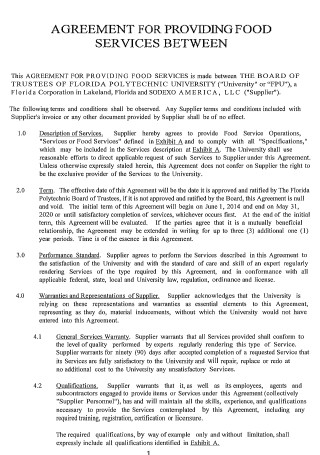
Providing Food Service Agreement
download now -

Mobile Food Vendor Agreement
download now -

Food Corporation Service Agreement
download now -
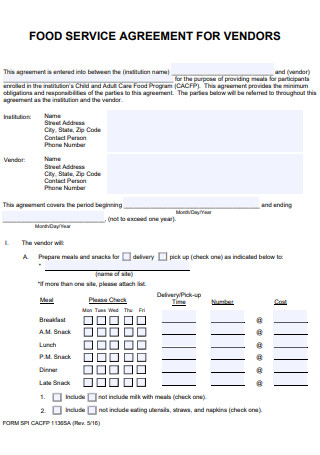
Food Service Agreement for Vendors
download now -
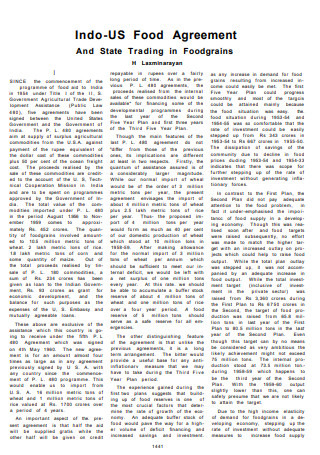
Food Agreement
download now -
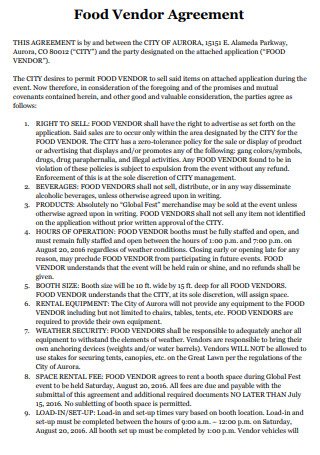
Food Vendor Agreement
download now -

Food Court Draft License Agreement
download now -

Food Service Negotiated Agreement
download now -

Food Service Agreement
download now -

Food Service Management Agreement
download now -

Food Service Employee Health Policy Agreement
download now -
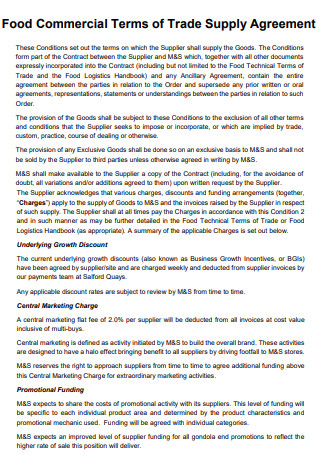
Food Commercial Terms of Trade Supply Agreement
download now -

Food and Beverages Concession Agreement
download now -

Shared Food Facility Agreement
download now -

Food Truck License Agreement
download now -

Right to Food Agreement
download now -

Food Bank Agreement on Establishing
download now -

Mobile Food Use of Restroom Agreement
download now -

Food Security Reserve Agreement
download now -

Food Employee Reporting Agreement
download now -

Sharing of a Permitted Food Facility Agreement
download now -

Leftover Food Agreement
download now -

Food System Agreement
download now -

Agri Food Trade Agreement
download now -

Food Mobile Property Use Agreement
download now -

Mobile Food Commissary Agreement
download now -

Food Industry Agreement
download now -

Food Services Provider Agreement
download now -

Food Contract Agreement
download now -

Food Compost Drop Off Pilot User Agreement
download now -

Food Master Agreement
download now -

Food Agreement to Use Property
download now -
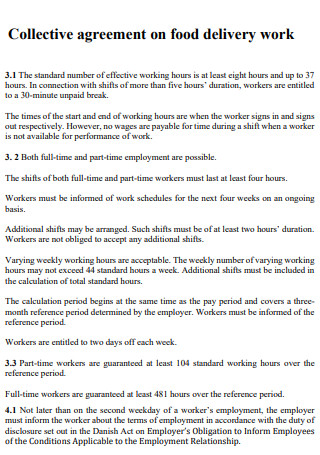
Food Delivery Work Collective Agreement
download now -
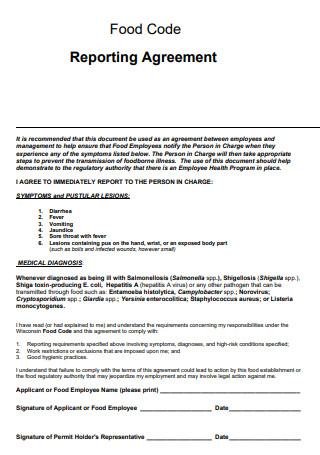
Food Code Reporting Agreement
download now -

Voluntary Food Reformulation Agreement
download now -

Draft Food Agreement
download now -

Food Surplus Agreement
download now -

Food Regulation Agreement
download now -

Disaster Food Catering Agreement
download now -

Food Hub Producer Agreement
download now -

Furnish Food Agreement
download now -

Food Waiver and Indemnification Agreement
download now -
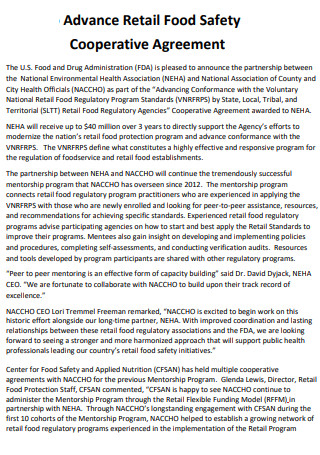
Retail Food Safety Agreement
download now -

Food Truck Sponsor Agreement
download now -

Food Import Compliance Agreement
download now -

Healthy Food Pantry Agreement
download now -

Food Vendor Application and Agreement
download now -

Food Fundraiser Agreement
download now -

Charity Food Donation Agreement
download now -

Food Products Agreement
download now
What Is a Food Agreement?
A food agreement is a written agreement made between a food service provider and an individual or organization. It is formal agreement wherein terms and conditions are outlined and are subject to the mutual agreement of the participating parties.
According to 2021 statistics published by the Food and Agriculture Organization of the United Nations, there was a rise in hunger with 770 million reported as undernourished in 2020. This was a 160 million increase in people from hunger data recorded in 2014. The same report showed that in every continent, moderate to severe food insecurity is found to be slightly higher for women than in men.
Examples of Food Agreements
There are multiple scenarios that may call for a formal food agreement or contract. In a majority of cases, it would involve a transactional relationship or business partnership with two or more parties. The following are just some common examples of scenarios wherein a food agreement may be required.
Tips for Choosing Food Providers
When choosing a caterer or any food service provider, it is important to set high standards. Food intake and ingestion are serious matters, especially if you are in charge of feeding hundreds or thousands of guests. The last thing you want is to be blamed for serving poor quality food at an event. The next time you’re sourcing for food service providers, keep in mind the following tips:
How to Create a Food Agreement
To create a food agreement, you need to have had a formal meeting or several exchanges already with your client or food service provider. A sound food agreement is a product of compromise and trust. And if you are looking for greater convenience, using a sample template will reduce the time spent needed to craft a food agreement. Simply browse and select a template of your choice from above and follow the step-by-step guide below.
Step 1: Identify the Parties
The introduction section in your food agreement should establish the identities of the parties entering in the agreement. In this case, the contract agreement should introduce the client and the food service provider. Ensure that the complete names of both are included. Although optional, you may also include the complete business address of either party. Lastly, do not neglect to assign a label for each party that’s identified in the agreement. In other words, you need to explicitly state which of them is referred to as the client or the contractor.
Step 2: Define the Roles and Responsibilities
Once you have identified the parties in the agreement, the next step is setting the expectations and deliverables required of each party. This section is a key element in a food agreement because it defines the responsibilities and tasks in relation to the delivery and service of food. For instance, a company hires a caterer to serve food at a corporate event. The specifics of the job must be found and described in detail within the food contract. Listing down each function or task is critical because it helps both parties manage their expectations.
Step 3: Set the Terms and Conditions
Aside from the definition of roles and functions, another crucial section is the terms and conditions. The provisions set in this section will dictate the business relationship or partnership. Both parties must adhere to the agreed terms in order for the contract to be upheld. The conditions can either be general or specific, depending on the nature of the agreement. Examples of general terms include liability clauses, grounds for breach of contract, payment guidelines, refund procedure and the like. While specific terms may include the delivery schedule of meals, ingress and egress schedules, and duration of contract.
Step 4: Conclude With a Formal Declaration
A standard way to end your food agreement is by inserting a formal declaration stating that the participating parties fully consent to the aforementioned terms. Most formal agreements conclude with a confirmatory statement. It is simply meant to reaffirm the agreement in a formal and final way. The statement does not have to be long. A brief sentence or two should be enough. But make sure to leave enough space at the bottom of the page for both parties to affix their name, date and signature.
FAQs
What should be included in an agreement?
A basic agreement typically contains an introduction of parties, an outline of roles and responsibilities, a collection of terms and conditions, and a formal confirmation statement at the end.
What is a contract food service provider?
A food service provider contract is a formal agreement between a caterer or food vendor and an organization. The latter engages the services of the former typically for events and other occasions.
What are the main types of food service?
According to an online article by Setupmyhotel.com, there are different kinds of food service. The major types of food service include plate service, cart service, platter service, buffet service and family style service.
A food agreement should not only be well-written and complete, it should adequately reflect the needs of the client and capabilities of the food provider. If you are short on time and need a quick but reliable template, you can easily browse the wide selection of editable agreements above to customize your own food agreement!
